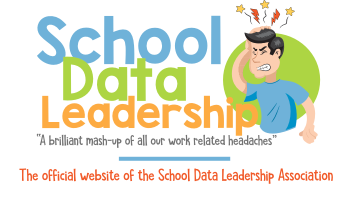Imagine you want to use a new learning app alongside your school's learning management system (LMS), like Canvas or Blackboard. This article explains how these two systems can work together, focusing on two common methods: API and LTI integrations. Think of integrations as "bridges" between different two different systems. In this case, will take a learning app and an LMS. Integrations would allow your LMS and the new app to share information securely, making things easier for educators and students with integrated functionality like single sign-on, rostering, content sync, and grade passback. Here's a simple breakdown of those two integration methods to connect to LMS providers: API (Applic...
Here's a video from the CALPADS team regarding the changes. https://youtu.be/7hjse9TiDeQ
Hello SDLA members!We've just put the finishing touches on the 7th annual district systems survey.You can find it here: 7th Annual District Systems Survey The URL is https://www.schooldataleadership.org/ca-k-12-school-districts/2022-district-systems-surveyPlease help us compile the best single resource for systems used by California school districts by taking 5-10 minutes to complete the survey. Hint - you can print the list out and use that to review your district's systems, checking them off as you go. The list can also be used to help your district understand what OPTIONS exist within each category.Each year we review the results and update the product pages listed on our site. Our goal i...
The U.S. Department of Education's Office for Civil Rights issued two resource collections—one for elementary and secondary schools and one for postsecondary institutions—designed to assist in planning for a successful and equitable return to schools and campuses. The two collections include fact sheets, Q&As, letters to educators, and other materials explaining the obligations that elementary, secondary, and postsecondary schools have under the federal civil rights laws enforced by OCR to provide educational environments free from discrimination. Read the Elementary and Secondary Resource Collection PDF (508K)Read the Postsecondary Resource Collection PDF (356K) As we look forward...
Kahoot! today announced the acquisition of Clever, one of the most widely-used digital learning platforms by U.S. K-12 schools, to make learning awesome worldwide. Oslo, Norway (May 6, 2021) – Kahoot!, a global learning platform company, announced today the acquisition of Clever Inc., a privately-held, California-based company that is one of the most widely-used digital learning platforms by U.S. K-12 schools. The partnership between two of the most popular platforms in education, with distinct and highly complementary offerings, will provide improved learning solutions and offerings to U.S. schools, while accelerating the global expansion of Clever's solutions. Kahoot! Group will acquire 10...
The United States Department of Education on Tuesday April 6, 2021 approved in writing a request from the California Department of Education to waive some accountablity, school identificiation, and related reporting requirements for the 2020-21 school year due to challenges related to the Covid-19 pandemic. Please note that these accountabilty requirement waivers did NOT extend reporting or testing deadlines nor did they waive the administration of any CAASPP, CAST, CAA, ELPAC, or related state tests. In addition no extension to testing deadlines were issued. You can read the full report below:
Be an ESSER III Hero: Three Technologies that Facilitate A Successful Return to School On Thursday, March 11, 2021, the first anniversary of the pandemic declaration, H.R. 1319, the "American Rescue Plan Act (ARPA) of 2021," was signed and became Law 117-2. The ARPA, a $1.9 trillion plan, included an even larger relief package for ESSER III than ESSER I and ESSER II combined, providing $123 billion for schools to tackle learning loss and prepare to reopen in the fall. These funds provide critical assistance to help schools and districts maintain a high-quality learning environment, continue the establishment of innovative learning methods, and combat COVID-19 related learning loss. Our ...
In ten years, will historians look back at the 30-year effort to get teachers to interpret test data as a failure? I'm impatient. I don't want to wait ten years. Although I'm no historian, here's my verdict. Yes, it was a failure. This long push to make teachers do "data-driven decision-making" has flopped. But of all those who share responsibility for this flop, teachers are the least culpable. Evidence of its failure is everywhere. The tests most teachers favor are the ones they create. Those teacher-created tests often reveal the least about the degree to which students have mastered the subject matter they've studied. State tests are disliked, disrespected and misunderstood. Proof of how...
The California Department of Education has partnered with the Sacramento County Office of Education (SCOE) to hold the annual California Assessment Conference on October 6 and 7, 2020, through a virtual conference platform. Details about this professional learning opportunity and registration are available on the conference website at https://www.cdecac.org.

